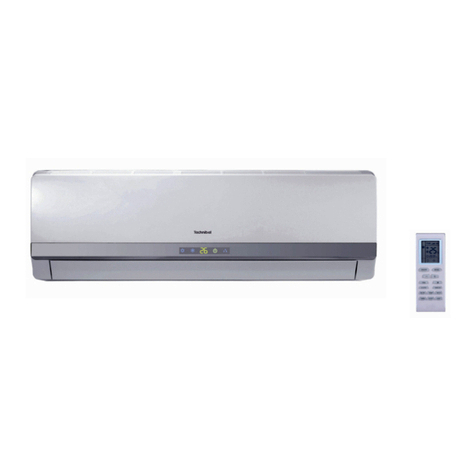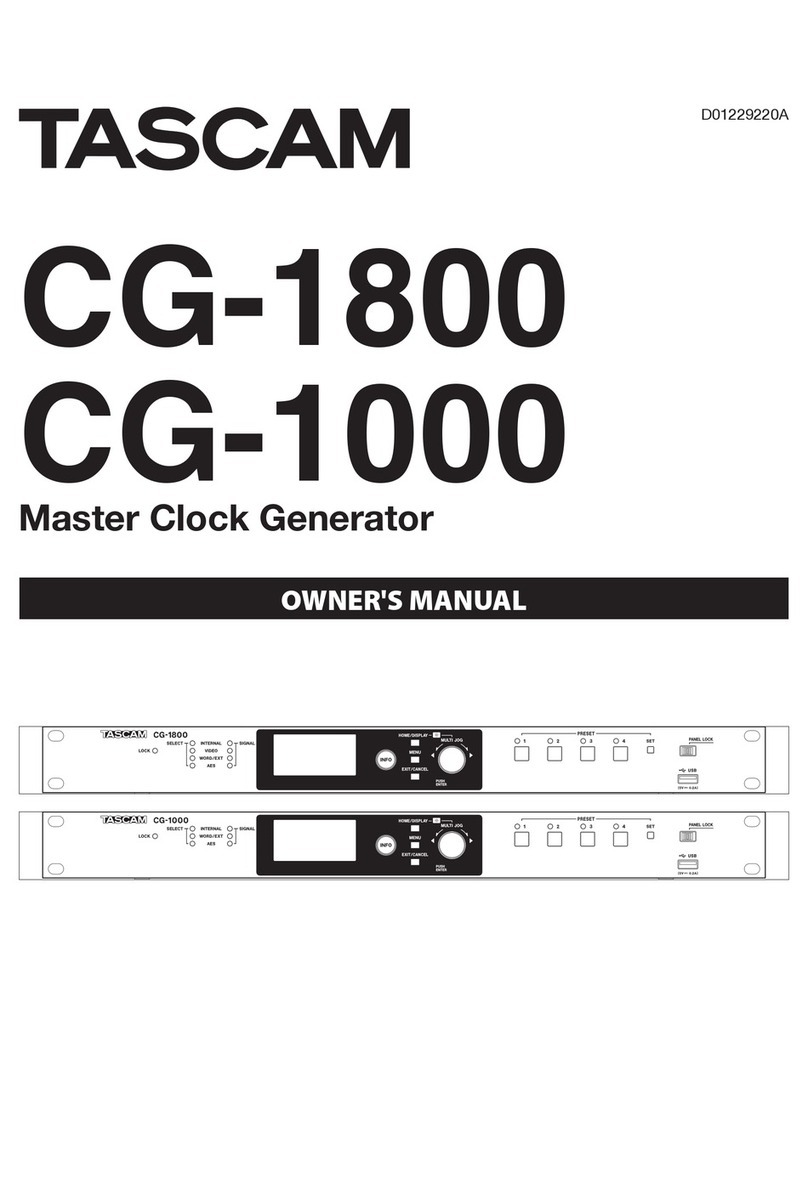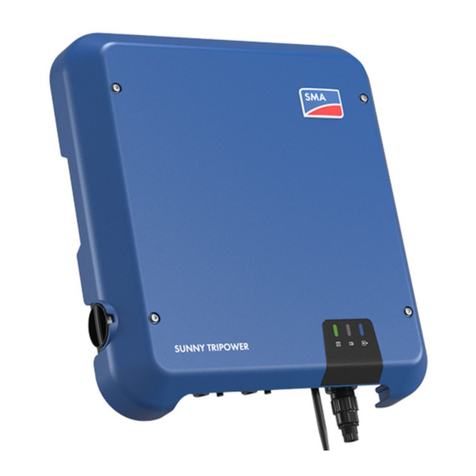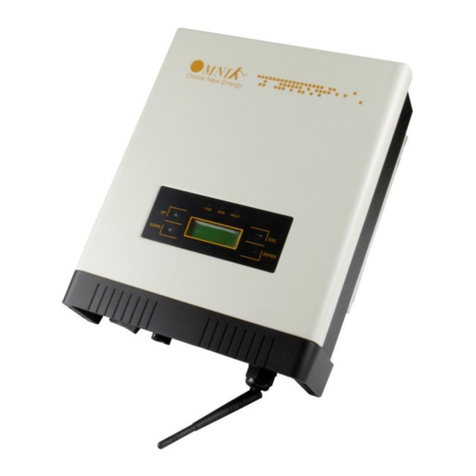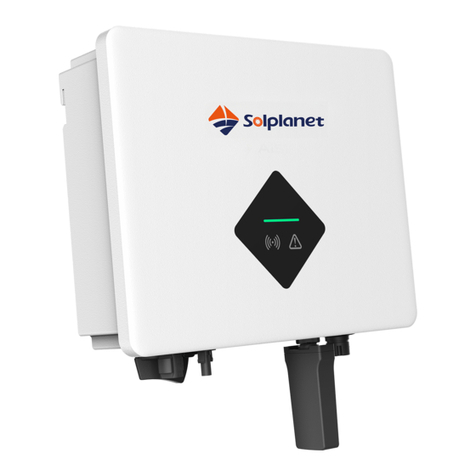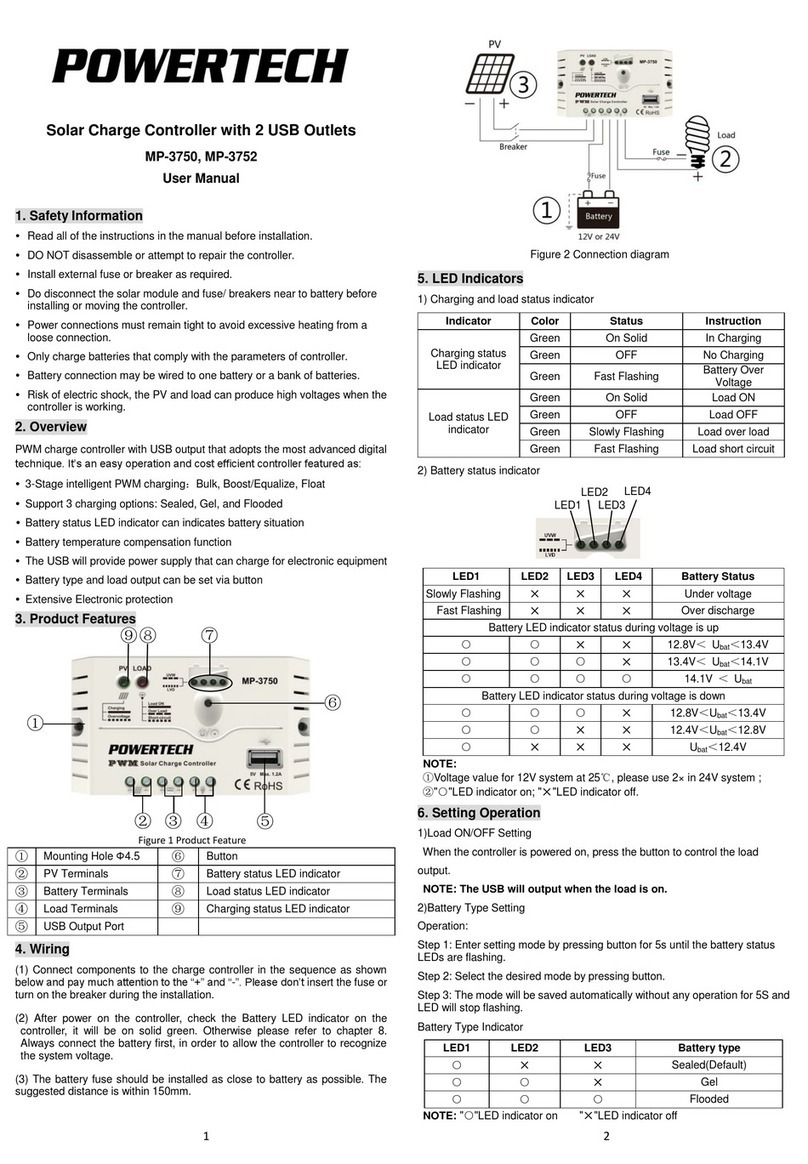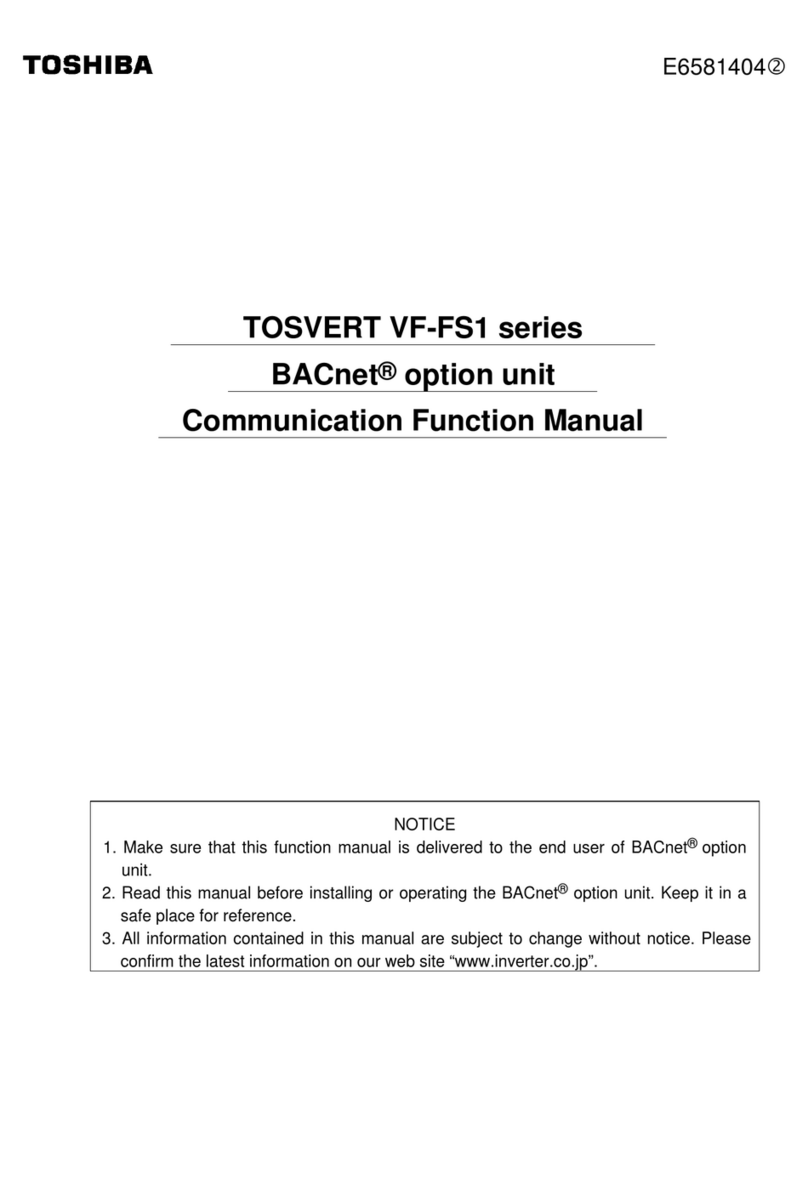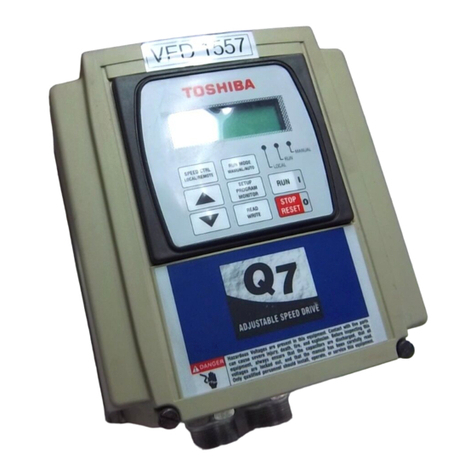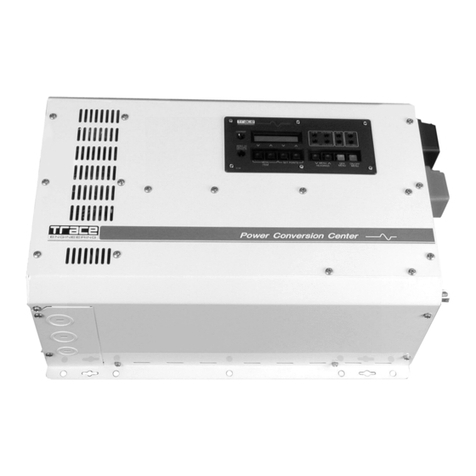Technibel CAFM1V Series Instruction manual

April 2008
MINI MULTISET V.R.F. DC INVERTER R410A
TECHNICAL DATA
OUTDOOR UNITS

CAFM1V
CAFM1VS
CAFM2V
CAFM
MAFM
SPAFM
DSAFM
DSAFMHP
KFM
KFMNC
GRFMI
GRFM
K
MINI-MULTISET System - DC Inverter
Line-up
Models R410A
Indoor units
Indoor unit type
CAFM1V**
CAFM1VS**
CAFM2V**
CAFM*
MAFM
SPAFM
DSAFM
DSAFMHP
**
KFM**
KFMNC**
KPAFM*
SDAFM*
1-Way Air Discharge
semi-concealed
Wall-mounted
Ceiling-mounted
Concealed-Duct
Floor standing
Concealed-Floor
Floor standing
Slim Ducted l
7 9 12 16 18 22 25 36 48
CAFM1V74R CAFM1V94R CAFM1V124R
CAFM1VS94R CAFM1VS124R CAFM1VS184R CAFM1VS254R
CAFM1VS74R CAFM2V94R CAFM2V124R CAFM2V184R CAFM2V254R
CAFM75R CAFM95R CAFM125R CAFM165R CAFM185R CAFM255R CAFM365R CAFM485R
MAFM75R MAFM95R MAFM125R MAFM185R MAFM255R
SPAFM124R** SPAFM184R** SPAFM255R SPAFM365R SPAFM485R
DSAFM75R* DSAFM95R* DSAFM125R* DSAFM165R* DSAFM185R* DSAFM225R* DSAFM255R DSAFM365R DSAFM485R
DSAFMHP254R DSAFMHP364R DSAFMHP484R
KFM74R KFM94R KFM124R KFM184R KFM254R
KFMNC74R KFMNC94R KFMNC124R KFMNC184R KFMNC254R
KPAPM75R KPAFM95R KPAPM125R KPAFM165R KPAFM185R KPAFM225R
SDAFM76R SDAFM96R SDAFM126R SDAFM166R SDAFM186R SDAFM226R
Outdoor units
Optional controllers
Refrigerant R410A is used in the Outdoor units .
GRFMI
DC Inverter Unit
GRFMI306R5I, GRFMI406R5I, GRFMI506R5I
Wired Remote Controller K70D036Z
Wireless Remote Controller (for CAFM type) K70D037Z
Wireless Remote Controller (for KPAFM type) K70D038Z
Wireless Remote Controller (for SP
AFM type)
K70D040Z
Wireless Remote Controller+receiver for all types of Indoor units
K70D039Z
Wireless Remote Controller (for MAFM type) K70D041Z
Simplified Remote Controller K70D042Z
Remote sensor K70D050Z
System Controller K70D043Z
Schedule timer K70D046Z
K
* For these types of Indoor unit, please see the Installation Instructions accompanying the unit
** These types of Indoor unit are not available
1-Way Air Discharge
semi-concealed slim
2-Way Air Discharge
semi-concealed
semi-concealed
4-Way Air Discharge
Concealed-Duct
high static pressure
standing

i
IMPORTANT!
Please Read Before Starting
This air conditioning system meets strict safety and operat-
ing standards. As the installer or service person, it is an
important part of your job to install or service the system so it
operates safely and efficiently.
For safe installation and trouble-free operation, you must:
●Carefully read this instruction booklet before beginning.
●Follow each installation or repair step exactly as shown.
●Observe all local, state, and national electrical codes.
●This product is intended for professional use.
Permission from the power supplier is required when
installing an outdoor unit that is connected to a 16 A
distribution network.
●Pay close attention to all warning and caution notices
given in this manual. This symbol refers to a hazard or
unsafe practice which can result
in severe personal injury or death.
This symbol refers to a hazard or
unsafe practice which can result
in personal injury or product or
property damage.
If Necessary, Get Help
These instructions are all you need for most installation
sites and maintenance conditions. If you require help for a
special problem, contact our sales/service outlet or your
certified dealer for additional instructions.
In Case of Improper Installation
The manufacturer shall in no way be responsible for
improper installation or maintenance service, including fail-
ure to follow the instructions in this document.
SPECIAL PRECAUTIONS
When Wiring
ELECTRICAL SHOCK CAN CAUSE
SEVERE PERSONAL INJURY OR DEATH.
ONLY A QUALIFIED, EXPERIENCED
ELECTRICIAN SHOULD ATTEMPT TO
WIRE THIS SYSTEM.
•Do not supply power to the unit until all wiring and tubing
are completed or reconnected and checked.
•Highly dangerous electrical voltages are used in this sys-
tem. Carefully refer to the wiring diagram and these
instructions when wiring. Improper connections and inad-
equate grounding can cause accidental injury or death.
• Ground the unit following local electrical codes.
•Connect all wiring tightly. Loose wiring may cause over-
heating at connection points and a possible fire hazard.
When Transporting
Be careful when picking up and moving the indoor and outdoor
units. Get a partner to help, and bend your knees when lifting
to reduce strain on your back. Sharp edges or thin aluminum
fins on the air conditioner can cut your fingers.
When Installing…
…In a Room
Properly insulate any tubing run inside a room to prevent
“sweating”that can cause dripping and water damage to
walls and floors.
…In Moist or Uneven Locations
Use a raised concrete pad or concrete blocks to provide a
solid, level foundation for the outdoor unit. This prevents
water damage and abnormal vibration.
…In an Area with High Winds
Securely anchor the outdoor unit down with bolts and a
metal frame. Provide a suitable air baffle.
…In a Snowy Area (for Heat Pump-type Systems)
Install the outdoor unit on a raised platform that is higher
than drifting snow. Provide snow vents.
When Connecting Refrigerant Tubing
•Ventilate the room well, in the event that is refrigerant
gas leaks during the installation. Be careful not to allow
contact of the refrigerant gas with a flame as this will
cause the generation of poisonous gas.
•Keep all tubing runs as short as possible.
•Use the flare method for connecting tubing.
•Apply refrigerant lubricant to the matching surfaces of
the flare and union tubes before connecting them, then
tighten the nut with a torque wrench for a leak-free con-
nection.
•Check carefully for leaks before starting the test run.
When Servicing
•Turn the power OFF at the main power box (mains)
before opening the unit to check or repair electrical parts
and wiring.
•Keep your fingers and clothing away from any moving
parts.
•Clean up the site after you finish, remembering to check
that no metal scraps or bits of wiring have been left
inside the unit being serviced.
•Ventilate any enclosed areas when installing or testing
the refrigeration system. Escaped refrigerant gas, on
contact with fire or heat, can produce dangerously toxic
gas.
•Confirm after installation that no refrigerant gas is leak-
ing. If the gas comes in contact with a burning stove, gas
water heater, electric room heater or other heat source,
it can cause the generation of poisonous gas.
WARNING
WARNING
CAUTION
CAUTION

ii
2. The standards for minimum room volume are as
follows.
(1) No partition (shaded portion)
(2) When there is an effective opening with the adja-
cent room for ventilation of leaking refrigerant gas
(opening without a door, or an opening 0.15% or
larger than the respective floor spaces at the top
or bottom of the door).
(3) If an indoor unit is installed in each partitioned
room and the refrigerant tubing is interconnected,
the smallest room of course becomes the object.
But when mechanical ventilation is installed inter-
locked with a gas leakage detector in the smallest
room where the density limit is exceeded, the vol-
ume of the next smallest room becomes the object.
3. The minimum indoor floor space compared with the
amount of refrigerant is roughly as follows: (When
the ceiling is 2.7 m high)
Check of Density Limit
The room in which the air conditioner is to be
installed requires a design that in the event of
refrigerant gas leaking out, its density will not
exceed a set limit.
The refrigerant (R410A), which is used in the air condi-
tioner, is safe, without the toxicity or combustibility of
ammonia, and is not restricted by laws imposed to pro-
tect the ozone layer. However, since it contains more
than air, it poses the risk of suffocation if its density
should rise excessively. Suffocation from leakage of
refrigerant is almost non-existent. With the recent
increase in the number of high density buildings, how-
ever, the installation of multi air conditioner systems is
on the increase because of the need for effective use
of floor space, individual control, energy conservation
by curtailing heat and carrying power, etc.
Most importantly, the multi air conditioner system is
able to replenish a large amount of refrigerant com-
pared to conventional individual air conditioners. If a
single unit of the multi air conditioner system is to be
installed in a small room, select a suitable model and
installation procedure so that if the refrigerant acci-
dentally leaks out, its density does not reach the limit
(and in the event of an emergency, measures can be
made before injury can occur).
In a room where the density may exceed the limit,
create an opening with adjacent rooms, or install
mechanical ventilation combined with a gas leak
detection device. The density is as given below.
Total amount of refrigerant (kg)
Min. volume of the indoor unit installed room (m3)
≤Density limit (kg/m3)
The density limit of refrigerant which is used in multi air con-
ditioners is 0.3 kg/m3(ISO 5149).
1. If there are 2 or more refrigerating systems in a sin-
gle refrigerating device, the amount of refrigerant
should be as charged in each independent device.
For the amount of charge in this example:
The possible amount of leaked refrigerant gas in rooms
A, B and C is 10 kg.
The possible amount of leaked refrigerant gas in rooms
D, E and F is 15 kg.
NOTE
Outdoor unit
Refrigerant tubing
Indoor unit
e.g., charged
amount (10 kg)
Outdoor unit
Indoor unit
Room A Room B Room C Room D Room E Room F
e.g., charged
amount (15 kg)
Refrigerant tubing
Outdoor unit
Very
small
room Indoor unit
Small
room Medium
room Large room
Mechanical ventilation device –Gas leak detector
40
35
30
25
20
15
10
5
010 20 30
Total amount of refrigerant
Min. indoor floor space
m
2
kg
Range below the
density limit
of 0.3 kg/m
3
(countermeasures
not needed)
Range above
the density limit
of 0.3 kg/m
3
(countermeasures
needed)

iii
Mini Multiset VRF DCI
2. Design of Mini Multiset
1. Model Selecting and Capacity Calculator . . . . . . . . . . . . . . . . . . . . . . . . . . . . . . . . . . . 2-2
2. System Design . . . . . . . . . . . . . . . . . . . . . . . . . . . . . . . . . . . . . . . . . . . . . . . . . . . . . . . . 2-13
3. Installation Instructions . . . . . . . . . . . . . . . . . . . . . . . . . . . . . . . . . . . . . . . . . . . . . . . . . 2-25
4. Electrical Wiring . . . . . . . . . . . . . . . . . . . . . . . . . . . . . . . . . . . . . . . . . . . . . . . . . . . . . . . 2-34
1. Outiline of Mini Multiset
1. Line-up . . . . . . . . . . . . . . . . . . . . . . . . . . . . . . . . . . . . . . . . . . . . . . . . . . . . . . . . . . . . . . . 1-2
4. Test Run and Others
1. Air Purging . . . . . . . . . . . . . . . . . . . . . . . . . . . . . . . . . . . . . . . . . . . . . . . . . . . . . . . . . . . .4-2
2. Test Run . . . . . . . . . . . . . . . . . . . . . . . . . . . . . . . . . . . . . . . . . . . . . . . . . . . . . . . . . . . . . .4-5
2-1. Preparing for Test Run . . . . . . . . . . . . . . . . . . . . . . . . . . . . . . . . . . . . . . . . . . . . . . . . . . . . . . . . . . . . . .4-5
2-2. Test Run Procedure . . . . . . . . . . . . . . . . . . . . . . . . . . . . . . . . . . . . . . . . . . . . . . . . . . . . . . . . . . . . . . . .4-6
2-3. Outdoor Unit PCB Setting . . . . . . . . . . . . . . . . . . . . . . . . . . . . . . . . . . . . . . . . . . . . . . . . . . . . . . . . . . . .4-7
2-4 Auto Address Setting . . . . . . . . . . . . . . . . . . . . . . . . . . . . . . . . . . . . . . . . . . . . . . . . . . . . . . . . . . . . . . .4-9
2-5. Caution for Pump Down . . . . . . . . . . . . . . . . . . . . . . . . . . . . . . . . . . . . . . . . . . . . . . . . . . . . . . . . . . . .4-16
2-6. Meaning of Alarm Messages . . . . . . . . . . . . . . . . . . . . . . . . . . . . . . . . . . . . . . . . . . . . . . . . . . . . . . . .4-16
3. Electrical Wiring . . . . . . . . . . . . . . . . . . . . . . . . . . . . . . . . . . . . . . . . . . . . . . . . . . . . . . .4-18
3-1. General Precautions on Wiring . . . . . . . . . . . . . . . . . . . . . . . . . . . . . . . . . . . . . . . . . . . . . . . . . . . . . . .4-18
3-2. Recommended Wire Length and Wire Diameter for Power Supply System . . . . . . . . . . . . . . . . . . . .4-18
3-3. Wiring System Diagram . . . . . . . . . . . . . . . . . . . . . . . . . . . . . . . . . . . . . . . . . . . . . . . . . . . . . . . . . . . .4-19
4. Installation Standards . . . . . . . . . . . . . . . . . . . . . . . . . . . . . . . . . . . . . . . . . . . . . . . . . .4-22
4-1. Check of Density Limit . . . . . . . . . . . . . . . . . . . . . . . . . . . . . . . . . . . . . . . . . . . . . . . . . . . . . . . . . . . . .4-22
4-2. Precautions for Installation Using New Refrigerant . . . . . . . . . . . . . . . . . . . . . . . . . . . . . . . . . . . . . . .4-23
3. Mini Multiset unit specifications
1. Outdoor Unit
1-1. Specifications . . . . . . . . . . . . . . . . . . . . . . . . . . . . . . . . . . . . . . . . . . . . . . . . . . . . . . . . . . . . . . . . . . . . . 3-3
1-2. Major Component Specifications . . . . . . . . . . . . . . . . . . . . . . . . . . . . . . . . . . . . . . . . . . . . . . . . . . . . . . 3-9
1-3. Dimensional Data . . . . . . . . . . . . . . . . . . . . . . . . . . . . . . . . . . . . . . . . . . . . . . . . . . . . . . . . . . . . . . . . . 3-15
1-4. Refrigerant Flow Diagram . . . . . . . . . . . . . . . . . . . . . . . . . . . . . . . . . . . . . . . . . . . . . . . . . . . . . . . . . . . 3-16
1-5. Sound Data . . . . . . . . . . . . . . . . . . . . . . . . . . . . . . . . . . . . . . . . . . . . . . . . . . . . . . . . . . . . . . . . . . . . . . 3-17
Contents

1
1 - 1
Outline of Mini Multiset
Contents
1. Outiline of Mini Multiset
1. Line-up . . . . . . . . . . . . . . . . . . . . . . . . . . . . . . . . . . . . . . . . . . . . . . . . . . . . . . . . . . . . . . . 1-2

1
1 -2
Outline of Mini Multiset
1. Line-up
Outdoor units
Type
Capacity:
kW (BTU/h) 14.0 (47,800) 15.5 (52,900)
Cooling /
Heating / 16.0 (54,600)
11.2 (38,200)
/ 12.5 (42,700) / 17.6 (60,000)
Outdoor
Unit
GRFMI306R5I
GRFMI306R5I
GRFMI406R5I
GRFMI406R5I
GRFMI506R5I
GRFMI506R5I
DC inverter unit
170
340
296
20
10380
405
10
15
66
150
940
Wind
direction
219
13 13
1313
70
110
36
60
110
130
198
141
600
573
173 81
71
1230
18
120
140
167
197
168
121
72
Wind
direction
Wind
direction
99
20
60
Wind direction

2
2- 1
Design of Mini Multiset
2. Design of Mini Multiset
1. Model Selecting and Capacity Calculator . . . . . . . . . . . . . . . . . . . . . . . . . . . . . . . . . . . 2-2
2. System Design . . . . . . . . . . . . . . . . . . . . . . . . . . . . . . . . . . . . . . . . . . . . . . . . . . . . . . . . 2-13
3. Installation Instructions . . . . . . . . . . . . . . . . . . . . . . . . . . . . . . . . . . . . . . . . . . . . . . . . . 2-25
4. Electrical Wiring . . . . . . . . . . . . . . . . . . . . . . . . . . . . . . . . . . . . . . . . . . . . . . . . . . . . . . . 2-34

2
2- 2
Design of Mini Multiset
1. Model Selecting and Capacity Calculator
1-1. Operating Range
10
–10
–15
–5
0
5
10
15
20
25
30
35
40
45
Indoor air intake temp. °C (WB)
Outdoor air intake temp. °C (DB)
15
14
43
20 25 30
Operating
range
10
–15
–20
–10
–5
0
5
10
15
20
25
Indoor air intake temp. °C (DB)
Outdoor air intake temp. °C (WB)
15 20 25 30 35
Operating
range
Cooling Heating

2
2- 3
Design of Mini Multiset
1. Model Selecting and Capacity Calculator
1-2. Procedure for Selecting Models and Calculating Capacity
■Model Selection Procedure
Select the model and calculate the capacity for each refrigerant system according to the procedure shown below.
Calculation of the indoor air-conditioning load
●Calculate the maximum air-conditioning load for each room or zone.
Selection of an air conditioning system
●Select the ideal air conditioning system for air conditioning of each room or zone.
Design of the control system
●Design a suitable control system for the selected air conditioning system.
Preliminary selection of indoor and outdoor units
●Make preliminary selections that are within the allowable range for the system. .................. 2-2
Check of the tubing length and elevation difference
●Check that the length of refrigerant tubing and the elevation difference are within the allowable
ranges. ................................................................................................................ 2-4, 2-15 –2-16
Calculation of the corrected outdoor unit capacity
●Capacity correction coefficient for outdoor temperature conditions ..........................2-4, 2-6 –2-7
●Capacity correction coefficient for tubing length and elevation difference ........................ 2-4, 2-8
●Heating capacity correction coefficient for frosting/defrosting ............................................2-4, 2-7
Calculation of the corrected capacity for each indoor unit
●Capacity correction coefficient for indoor temperature conditions......................................2-4, 2-8
●Capacity distribution ratio based on the tubing length and elevation difference....2-4, 2-15 –2-16
Calculation of the actual capacity for each indoor unit
●Calculate the corrected indoor/outdoor capacity ratio, based on the corrected outdoor unit
capacity and the total corrected capacity of all indoor units in the same system. Use the result to
calculate the capacity correction coefficient for the indoor units. ....................................2-4 –2-8
●Multiply the corrected capacity of each indoor unit by the capacity correction coefficient to calcu-
late the actual capacity for each indoor unit. ............................................................................ 2-6
Recheck of the actual capacity for each indoor unit
●If the capacity is inadequate, reexamine the unit combinations.
Example 1: Increasing the outdoor unit capacity ........................................................ 2-17 –2-18
Example 2: Increasing the indoor unit capacity .......................................................... 2-17 –2-18
Design of tubing
●Create a tubing design which minimizes the amount of additional refrigerant charge as much as
possible. ......................................................................................................................2-14 –2-15
●If tubing extension is expected in the future, create the tubing design with adequate considera-
tion for this extension.
●Select the tubing size for the main tube (LA) up to the No. 1 distribution joint based on the rated
cooling capacity of the outdoor unit. Select tubing sizes after the distribution point based on the
total rated cooling capacity of the connected indoor units.
Calculation of additional refrigerant charge amount
●Calculate the additional refrigerant charge from the diameters and lengths of the refrigerant tub-
ing. Even if the gas tubing diameter was increased, determine the additional refrigerant charge
based only on the liquid tubing size. ...................................................................................... 2-21
●Check the minimum indoor capacity (limit density) with respect to the amount of refrigerant. If the
limit density is exceeded, be sure to install ventilation equipment or take other corrective steps. 2-22
Design of electrical wiring capacity
●Select a wiring capacity according to the method of power supply. ...................................... 2-32

2
2- 4
Design of Mini Multiset
1. Model Selecting and Capacity Calculator
1-3. Calculation of Actual Capacity of Indoor Unit
■Calculating the actual capacity of each indoor unit
Because the capacity of a multi air-conditioner changes according to the temperature conditions, tubing length,
elevation difference and other factors, select the correct model after taking into account the various correction val-
ues. When selecting the model, calculate the corrected capacities of the outdoor unit and each indoor unit. Use the
corrected outdoor unit capacity and the total corrected capacity of all the indoor units to calculate the actual final
capacity of each indoor unit.
1. Outdoor unit capacity correction coefficient
Find the outdoor unit capacity correction coefficient for the following items.
(1) Capacity correction for the outdoor unit temperature conditions
From the graph of capacity characteristics on page 2-6, use the outdoor temperature to find the capacity cor-
rection coefficient.
(2) Capacity correction for the outdoor unit tubing length and elevation difference
From the graph of capacity change characteristics on page 2-7, use the tubing length and elevation difference
to find the capacity correction coefficient.
The outdoor unit correction coefficient is the value which corresponds to the most demanding indoor unit.
(3) Capacity correction for outdoor unit frosting/defrosting during heating
From the table on page 2-7, find the capacity correction coefficient.
2. Indoor unit capacity correction coefficients
Find the indoor unit capacity correction coefficient for the following items.
(1) Capacity correction for the indoor unit temperature conditions
From the graph of capacity characteristics on page 2-8, use the indoor temperature to find the capacity correc-
tion coefficient.
(2) Capacity distribution ratio based on the indoor unit tubing length and elevation difference
First, in the same way as for the outdoor unit, use the tubing length and elevation difference for each indoor unit
to find the correction coefficient from the graph of capacity change characteristics on page 2-8. Then divide the
result by the outdoor unit correction coefficient to find the capacity distribution ratio for each indoor unit.
3. Calculating the corrected capacities for the outdoor unit and each indoor unit
The corrected capacities for the outdoor unit and each indoor unit are calculated form the formula below.
<Cooling>
●Outdoor unit corrected cooling capacity (5) = Outdoor unit rated cooling capacity ×Correction coefficient for out-
door temperature conditions ((1) Page 2-6) ×Correction coefficient
for tubing length and elevation difference ((2) Page 2-8)
* However, if the outdoor unit corrected cooling capacity [5] is greater than 100%, then the outdoor unit corrected cooling
capacity [5] is considered to be 100%.
●Corrected cooling capacity of each indoor unit (5) = Rated cooling capacity for that indoor unit ×Correction coef-
ficient for indoor temperature conditions at that indoor unit ((1) Page 2-7) ×Distribution ratio based on tubing
length and elevation difference at that indoor unit ((2) Page 2-8)
However, the corrected cooling capacity of each indoor unit is found as shown below.
If (1) < 100% and (1) ×(2) > 100%: Corrected cooling capacity for that indoor unit [5] = Rated cooling capacity for that indoor unit
If (1) ≥100%: Corrected cooling capacity for that indoor unit (5) = Rated cooling capacity for that indoor unit ×(1)
Capacity distribution ratio for each indoor unit (2) = Correction coefficient for that indoor unit / Correction coefficient for the outdoor unit

2
2- 5
Design of Mini Multiset
1. Model Selecting and Capacity Calculator
<Heating>
●Outdoor unit corrected heating capacity (5) = Outdoor unit rated heating capacity ×Correction coefficient for out-
door temperature conditions ((1) Page 2-6) ×Correction coefficient
for tubing length and elevation difference ((2) Page 2-8) ×Correc-
tion coefficient for frosting/defrosting ((2) Page 2-7)
* However, if the outdoor unit corrected heating capacity [5] is greater than 100%, then the outdoor unit corrected heating
capacity is considered to be 100%.
●Corrected heating capacity of each indoor unit (5) = Rated heating capacity for that indoor unit ×Correction coef-
ficient for indoor temperature conditions at that indoor unit ((1) Page 2-6) ×Distribution ratio based on tubing
length and elevation difference at that indoor unit ((2) Page 2-8).
length and elevation difference at that indoor unit ((3) Page 2-72)
* Characteristic graphs are shown on the pages listed above next to each correction item.
Find each correction coefficient from the appropriate conditions.
4. Calculating the actual indoor unit capacity based on the indoor/outdoor corrected capacity ratio
Calculate the actual capacity of each indoor unit from the values (found in (3)) for the corrected outdoor unit capac-
ity and the corrected capacity of each indoor unit.
<Cooling capacity>
Corrected indoor/outdoor capacity ratio during cooling (Ruc) = Total corrected cooling capacity of all indoor units in
that system / Corrected outdoor unit cooling capacity
If the corrected outdoor unit cooling capacity is greater than or equal to the total corrected unit cooling capacity of
all indoor units in that system (Ruc ≤1), then:
Actual cooling capacity of each indoor unit (7) = Corrected cooling capacity of each indoor unit (5)
(In other words, the correction coefficient (6), based on the corrected indoor/outdoor capacity ratios for each
indoor unit, is 1.)
If the corrected outdoor unit cooling capacity is less than the total corrected unit cooling capacity of all indoor units
in that system (Ruc > 1), then:
(Actual cooling capacity of each indoor unit (7)) = (Corrected cooling capacity of each indoor unit (5)) ×(0.25 ×
Ruc + 0.75) / Ruc
(In other words, the correction coefficient (6), based on the corrected indoor/outdoor capacity ratios for each
indoor unit, is the underlined part in the formula above.)
<Heating capacity>
Corrected indoor/outdoor capacity ratio during heating (Ruh) = Total corrected heating capacity of all indoor units in
that system / Corrected outdoor unit heating capacity
If the corrected outdoor unit heating capacity is greater than or equal to the total corrected unit heating capacity of
all indoor units in that system (Ruh ≤1), then:
Actual heating capacity of each indoor unit (7) = Corrected heating capacity of each indoor unit (5)
(In other words, the correction coefficient (6), based on the corrected indoor/outdoor capacity ratios for each
indoor unit, is 1.)
If the corrected outdoor unit heating capacity is less than the total corrected unit heating capacity of all indoor units
in that system (Ruh > 1), then:
(Actual heating capacity of each indoor unit (7)) = (Corrected heating capacity of each indoor unit (5)) ×(0.1 ×
Ruh + 0.9) / Ruh
(In other words, the correction coefficient (6), based on the corrected indoor/outdoor capacity ratios for each
indoor unit, is the underlined part in the formula above.)
However, the corrected heating capacity of each indoor unit is found as shown below.
If (1) < 100% and (1) ×(2) > 100%: Corrected heating capacity for that indoor unit (5) = Rated heating capacity for that indoor unit
If (1) ≥100%: Corrected heating capacity for that indoor unit (5) = Rated heating capacity for that indoor unit ×(1)

2
2- 6
Design of Mini Multiset
1. Model Selecting and Capacity Calculator
Refer to the graph below for the correction coefficients for Ruc and Ruh.
Indoor unit capacity correction coefficient for Ruc (cooling)
Indoor unit capacity correction coefficient for Ruh (heating)
1.0
0.9
0.8
0.7
0.6
0.5
0.4 0.5 0.6 0.7 0.8 0.9 1.0 1.1 1.2 1.3 1.4 1.5 1.6 1.7 1.8 1.9 2.0
Indoor unit capacity correction coefficient
Corrected indoor/outdoor capacity ratio (Ruc or Ruh)
Note:
When Ruc or Ruh is less than or equal to 1.0, the indoor unit capacity correction coefficient for both Ruc and Ruh is 1.0.
5. Graph of capacity correction coefficients
■Graph of outdoor unit capacity characteristics (1 – (1))
Outdoor unit cooling capacity characteristics
–10
120 22WB
19WB
16WB
100
80
35 38 43
80
90
100
104(1)
(2)
(1)
(2) (2) GRFMI506R5I
(1) GRFMI306R5I
GRFMI406R5I
Capacity ratio (%)
Outdoor air intake temp. (°C DB)

2
2- 7
Design of Mini Multiset
1. Model Selecting and Capacity Calculator
■Outdoor unit heating capacity correction coefficient during frosting/defrosting (1 – (2))
* To calculate the heating capacity with consideration for frosting/defrosting operation, multiply the heating capacity
found from the capacity graph by the correction coefficient from the table above.
GRFMI406R5I
130
120
110
100
90
80
70
60
50
40
15
20
25
( C DB)
GRFMI306R5I
( C DB)
130
120
110
100
90
80
70
60
50
40
15
20
25
GRFMI506R5I
130
120
110
100
90
80
70
60
50
40
15
20
25
( C DB)
Outdoor unit heating capacity characteristics
Outdoor air intake temp. ( C DB)
0
–20 –15 –10 –5 0 5 10 15
Outdoor air intake temp. ( C DB)
0
–20 –15 –10 –5 0 5 10 15
Outdoor air intake temp. ( C DB)
0
–20 –15 –10 –5 0 5 10 15
Outdoor intake air –20 –15 –10 –8–6–5–4–2–10123456
temp. (°C WB RH 85%)
Correction 0.97 0.97 0.97 0.96 0.94 0.91 0.89 0.87 0.87 0.87 0.88 0.89 0.91 0.92 0.95 1.0
coefficient
Capacity ratio (%)Capacity ratio (%)
Capacity ratio (%)

2
2- 8
Design of Mini Multiset
1. Model Selecting and Capacity Calculator
■Graph of indoor unit capacity characteristics (2 – (1))
■Graph of capacity change characteristics resulting from tubing length and elevation difference (1 • 2 – (2))
Rate of cooling capacity change (%)
Indoor unit cooling capacity characteristics Indoor unit heating capacity characteristics
indicates the rating point. indicates the rating point.
Indoor air intake temp. (°C WB)
Rate of heating capacity change (%)
Indoor air intake temp. (°C DB)
120
110
100
90
80
110
105
100
95
90
14 15 16 17 18 19 20 21 22 23 24 25 15 16 17 18 19 20 21 22 23 24 25 26 27
100
%
98
96
94
92 90 88 86 84 82 80 78 76
0 10 20 30 40 50 60 70 80 90 100 110 120 130 140 150
<Cooling>
Base capacity
change rate (%)
Elevation difference (m)
Equivalent len
g
th (m)
50
40
30
20
10
0
-10
-20
-30
-40
97 96 95 94 93 92 91
0 10 20 30 40 50 60 70 80 90 100 110 120 130 140 150
<Heating>
Base capacity
change rate (%)
Elevation difference (m)
Equivalent len
g
th (m)
50
40
30
20
10
0
-10
-20
-30
-40
98
99
100
%
The positive side for the elevation difference indicates that the outdoor unit is installed at a higher position than the
indoor units. The negative side indicates the opposite.

2
2- 9
Design of Mini Multiset
1. Model Selecting and Capacity Calculator
1-4. Capacity Correction Graph According to Temperature Condition
■Capacity characteristics
(The corrected capacity for specific temperature conditions can be found from the graphs below and next page.)
–10
120 22WB
19WB
16WB
100
80
35 38 43
80
90
100
104(1)
(2)
(1)
(2) (2) GRFMI506R5I
(1) GRFMI306R5I
GRFMI406R5I
(2) GRFMI506R5I
(1) GRFMI306R5I
GRFMI406R5I
–10
22WB 19WB
16WB
100
50
35 38 43
100
63
33
108
100104
92
114
118
124
50
112
(1)
(1)
(2)
(2)
(2)
Capacity ratio (%)
Outdoor air intake temp. (°C DB)
Capacity ratio (%)
Outdoor air intake temp. (°C DB)
<COOLING>

2
2- 10
Design of Mini Multiset
For model combinations (inverter model + constant-speed model) of 22 HP or higher, the lower limit for the out-
door air intake temperature is 5°C.
However, when the inverter model (GRFMI306-406-506R5I) is used separately, the lower limit for the outdoor air
intake temperature is –5°C.
GRFMI406R5I
Outdoor air intake temp. ( C DB)
130
120
110
100
90
80
70
60
50
40
130
120
110
100
90
80
70
60
50
15
20
25
15
20
25
–20 –15 –10 –5 0 5 10 15
( C DB)
GRFMI306R5I
( C DB)
Outdoor air intake temp. ( C DB)
130
120
110
100
90
80
70
60
50
40
130
120
110
100
90
80
70
60
50
15
20
25
15
20
25
–20 –15 –10 –5 0 5 10 15
GRFMI506R5I
Outdoor air intake temp. ( C DB)
130
120
110
100
90
80
70
60
50
40
130
120
110
100
90
80
70
60
50
15
20
25
15
20
25
–20 –15 –10 –5 0 5 10 15
( C DB)
<HEATING>
1. Model Selecting and Capacity Calculator
NOTE
Capacity ratio (%)
Input ratio (%)Capacity ratio (%)Input ratio (%)
Capacity ratio (%)Input ratio (%)

2
2- 11
Design of Mini Multiset
1. Model Selecting and Capacity Calculator
1-5. Capacity Correction Graph According to Tubing Length and Elevation Difference
■Capacity change characteristics
92 90 88 86 84 82 80 78 76
0 10 20 30 40 50 60 70 80 90 100 110 120 130 140 150
<Cooling>
<Heating>
Elevation difference (m)
Equivalent length (m)
50
40
30
20
10
0
–10
–20
–30
–40
*1
97 96 95 94 93 92 91
0 10 20 30 40 50 60 70 80 90 100 110 120 130 140 150
50
40
30
20
10
0
–10
–20
–30
–40
Elevation difference (m)
*1
98
99
100
%
Equivalent length (m)
Base capacity
change rate (%)
Base capacity
change rate (%)
94
100
%
98
96
●Inverter model rated performance values
Cooling HeatingItem
Model (SPW-)
GRFMI306R5I
GRFMI406R5I
GRFMI506R5I
Cooling
capacity
(kW)
Power
consumption
(kW)
Heating
capacity
(kW)
Power
consumption
(kW)
11.2
14.0
15.5
2.76
3.83
4.57
12.5
16.0
17.6
2.88
3.90
4.58
■Outdoor unit heating capacity correction coefficient during frosting/defrosting (1 –(3))
* To calculate the heating capacity with consideration for frosting/defrosting operation, multiply the heating capacity
found from the capacity graph by the correction coefficient from the table above.
Outdoor intake air –20 –15 –10 –8–6–5–4–2–10123456
temp. (°C WB RH 85%)
Correction 0.97 0.97 0.97 0.96 0.94 0.91 0.89 0.87 0.87 0.87 0.88 0.89 0.91 0.92 0.95 1.0
coefficient

2
2- 12
Design of Mini Multiset
1. Model Selecting and Capacity Calculator
Table 1 Correction coefficient for equivalent length when the size of the gas tube (LM) is increased
ø15.88
ø19.05
0.4
* When increasing the size of the gas tubing (LM), multiply by the correction coefficient from Table 1 and calculate the
equivalent length for section LM.
Tubing equivalent length after size increase = Standard tubing equivalent length ×Equivalent length correction coefficient
Tube diameter after change (gas tube, mm)
Equivalent length correction coefficient
Standard tube diameter (gas tube, mm)
For GRFMI306-406R5I units
■If the maximum tubing length (L1) exceeds 90 m (equivalent length), increase the tubing size of the main gas
tube (LM) by one rank.
* The size increase is applied to the gas tube only. In addition, for a 6 HP unit it is not necessary to increase the
tubing size.
■Increasing the tubing size of the gas tubes can reduce the loss of capacity caused by longer tubing lengths.
Refer to Table 1 to increase the tubing size. However, the maximum allowable tubing length must not be exceeded.
* The size increase is applied to the LM gas tube (main tube with the largest diameter) only, and is limited to the
cases shown in Table 1. In addition, the amount of additional refrigerant charge is determined from the liquid-
tube size only.
* In case of 6PS, increasing the size of the gas tube is not possible.
The upper limit for tubing size is ø19.05. Tubing above that size cannot be used.
WARNING

2
2- 13
Design of Mini Multiset
2. System Design
2-1. Tools Required for Installation (not supplied)
1. Standard screwdriver
2. Phillips head screwdriver
3. Knife or wire stripper
4. Tape measure
5. Carpenter’s level
6. Sabre saw or key hole saw
7. Hacksaw
8. Core bits
9. Hammer
10. Drill
11. Tube cutter
12. Tube flaring tool
13. Torque wrench
14. Adjustable wrench
15. Reamer (for deburring)
2-2. Accessories Supplied with Outdoor Unit
2-4. Additional Materials Required for Installation
1. Refrigeration (armored) tape
2. Insulated staples or clamps for connecting wire
(See your local codes.)
3. Putty
4. Refrigeration tubing lubricant
5. Clamps or saddles to secure refrigerant tubing
6. Scale for weighing
2-3. Type of Copper Tube and Insulation Material
If you wish to purchase these materials separately
from a local source, you will need:
1. Deoxidized annealed copper tube for refrigerant
tubing.
2. Foamed polyethylene insulation for copper tubes as
required to precise length of tubing. Wall thickness
of the insulation should be not less than 8 mm.
3. Use insulated copper wire for field wiring. Wire
size varies with the total length of wiring. Refer to
5. ELECTRICAL WIRING for details.
CAUTION
Check local electrical codes
and regulations before
obtaining wire. Also, check
any specified instructions
or limitations.
Table 2-1 (Outdoor Unit)
Figure
Quantity
Tube Discharge
Assy
1
Part name
0
1
0
1
1
Instruction manual paper
hp = horsepower
365 Model
(4 hp)
485 Model
(5 hp)
605 Model
(6 hp)
This manual suits for next models
79
Table of contents
Other Technibel Inverter manuals
Popular Inverter manuals by other brands
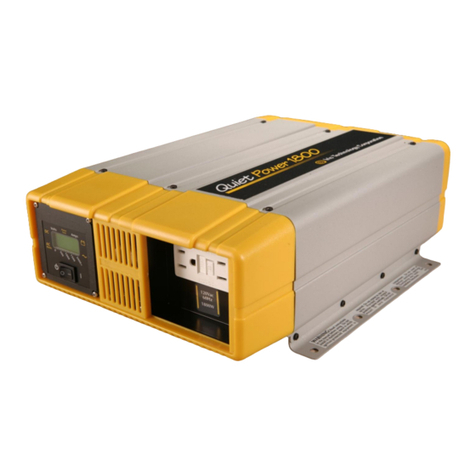
IRIS
IRIS QuietPower 1800 Operator's manual

SycoTec
SycoTec easyDrive TV 4504 Short instructions for use
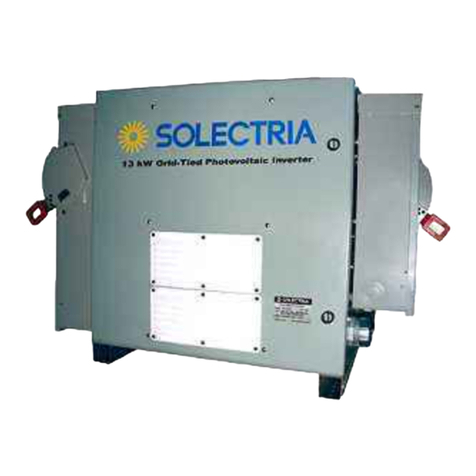
Solectria Renewables
Solectria Renewables PVI 13KW Installation and operation manual

Northern Tool
Northern Tool 8kW owner's manual
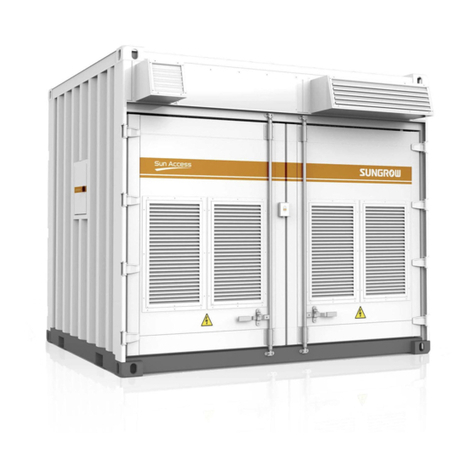
Sungrow
Sungrow SG2500-MV System manual

Hyundai
Hyundai DHY8500SELR user manual
